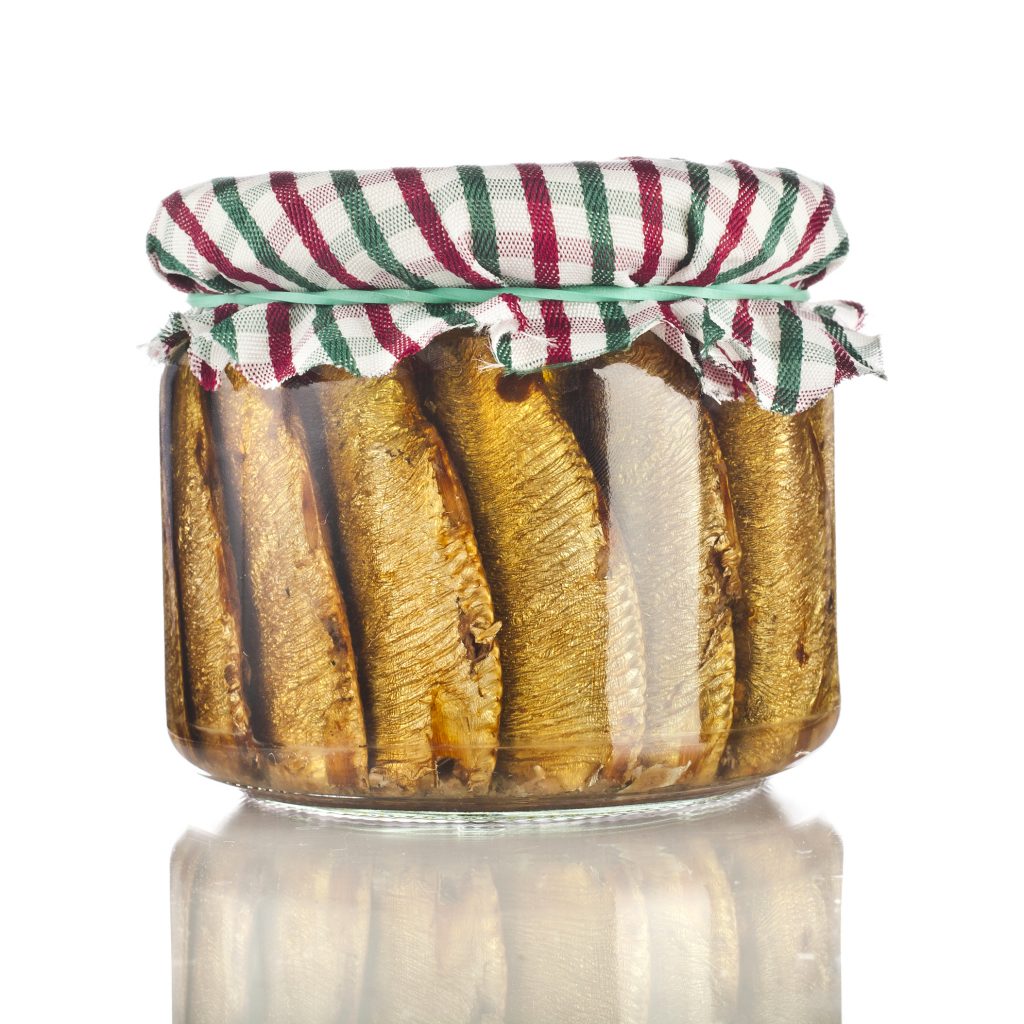An Alternative Method for Processing Fish
Home canning allows the home fish gourmet to use species such as Suckers which can be
taken in large numbers in the spring by dipnetting. It is feasible to can all species; but Suckers are the fish most commonly canned by Manitobans.
Canning is relatively easy: it is just a matter of following instructions carefully. Once the initial expenditure has been made for the jars, sealers and pressure canners, it is an economical way to process food for long term storage.
Canned fish such as Suckers may be substituted in many popular recipes calling for Salmon or Tuna, at a fraction of the cost and a joy to the taste.
Through the process of canning, high heat destroys any bacteria present, eliminating the cause of spoilage. When properly processed, a vacuum seal forms within the jar so that new bacteria cannot contaminate the food. To achieve
these results in canning fish, a pressure canner or a pressure cooker equipped with a pressure gauge must be used.
Only with this equipment is it possible to reach the required temperature of 118°C. This high temperature is necessary to kill the types of bacteria which may be present in fish, particularly the Clostridiens which is responsible for deadly botulism poisoning
No times will be given for the actual canning process because the various brand-name pressure canners will vary in the precise times. Consult your manual to see the times which are listed for canning fish with your particular canner or pressure cooker.
In canning fish, these points should be kept in mind. Follow the instructions carefully, particularly the instructions for bringing your pressure cooker to the temperature of 118°C. This temperature is essential to the success of your
fish canning venture. Leave yourself enough time so that you can follow through all steps thoroughly and leisurely. Maintain absolute cleanliness at all times. Use only equipment that is in first-rate condition. Don’t use any other canning methods other than the pressure cooker/cooker method. Methods such as the water bath method
do not bring fish to the temperature of 118°C that is necessary for safe eating. Be alert for the perfect seal – it’s vital.
Before canning fish, you will have to buy jars which are suitable for canning meat or fish products. Glass jars with glass threads are the best choice. You can use one of two lid types with these. The first is a glass lid which is used
with a separate rubber sealer ring and over which is screwed a metal band. The second is a metal lid to which a sealing compound is already applied and over which the metal band is screwed. Both give a good seal
To get a good seal when using the latter type, screw down the lid as tightly as possible before the jars are placed in the canner. Jars with glass lids should be screwed as tightly as possible then released one quarter turn before they are
put into the canner. When glass jars are removed from the canner, they should be screwed down tightly again.
Jars to be used for canning should be in first-rate condition. Check them carefully for nicks or chips before use. Always use new rubber sealing rings and metal lids. The best size for canning fish are one pint or one quart sizes. Clean the jars carefully before using.
When packing the jars, pack loosely to within an inch of the top of the jar. This headspace allows the fish to boil during processing without disturbing the seal. When fish is packed raw, it is necessary to bring the jars and contents to
78°C before sealing and placing into the pressure canner. Pack the jars and then place them in a boiling water bath until the contents reach this temperature.
Once this has been done, screw on the lids and place the jars in the pressure cooker
Fish to be canned should be handled carefully right from the catching stage. They should be gutted, gilled and iced down as soon as possible so their condition does not deteriorate. It would be a waste of time and effort to can fish
that were not in peak condition. The fish need not be boned as the bones will soften during canning, also providing valuable nutrients such as calcium and phosphorous. Small fish once gutted, can be left whole. Others may be cut as detailed in the following recipes.

Canned Fish Receipe
1 quart fish
1 teaspoon salt (heaping)
3 tablespoons vinegar
3-4 tablespoons tomato juice
3 tablespoons mazola oil
Method: Scale fish and clean fish (fish can also be filleted). Cut fish in round pieces like Salmon steaks. Then split in half or cut in smaller pieces if the steaks are too large. Wash in cold water and drain real well so they are quite dry. Pack the fish loosely in quart or pint jars. Then add the salt, vinegar, tomato
juice and mazola oil in order given. Close jars and put in canner. Or prepare Suckers as described in the above recipe and use the following ingredients in place of the salt, oil, vinegar and tomato juice.
1 teaspoon salt
1/4 teaspoon mustard
1/4 teaspoon pepper
1 small onion
4 tablespoons tomato soup
7 tablespoons vinegar
Home canned fish makes an economical and tasty substitute for canned Tuna or Salmon in any recipe. You can also eat it plain as is, or mixed with salad dressing and salt and pepper to be used as a sandwich spread. What ever your fancy, you are sure to enjoy a new taste experience.
